Youth activists, inspired by the 17 victims of the Marjory Stoneman Douglas mass shooting, owned the month of March, organizing protests for student safety from gun violence internationally, in Washington, D.C. and even locally in Milwaukee, Wisconsin.
Yet as the hundreds and thousands around the country – and hundreds of thousands in Washington, D.C. – rose their signs in support of the students, others who took in the sight were bittersweet.
“There should be more blacks out here, because that’s who’s dying.” - Gloria Nichols
Media coverage on Parkland has been overwhelmingly positive, with many [individuals] criticizing students’ critics and instead praising their bravery and strength.
However, statistics show that the students of Parkland, Florida do not fit the typical demographic of gun violence victims, leading many to wonder how they have become the face of a movement against gun violence.
Gloria Nichols attended the march in honor of her 30 year-old son, who was a victim of what many call “slow motion mass murder.” He, like 75 percent of Milwaukee’s 2014 homicide victims, died from a bullet in 2014; he was shot and killed by his tenant on August 19.
Enlarge
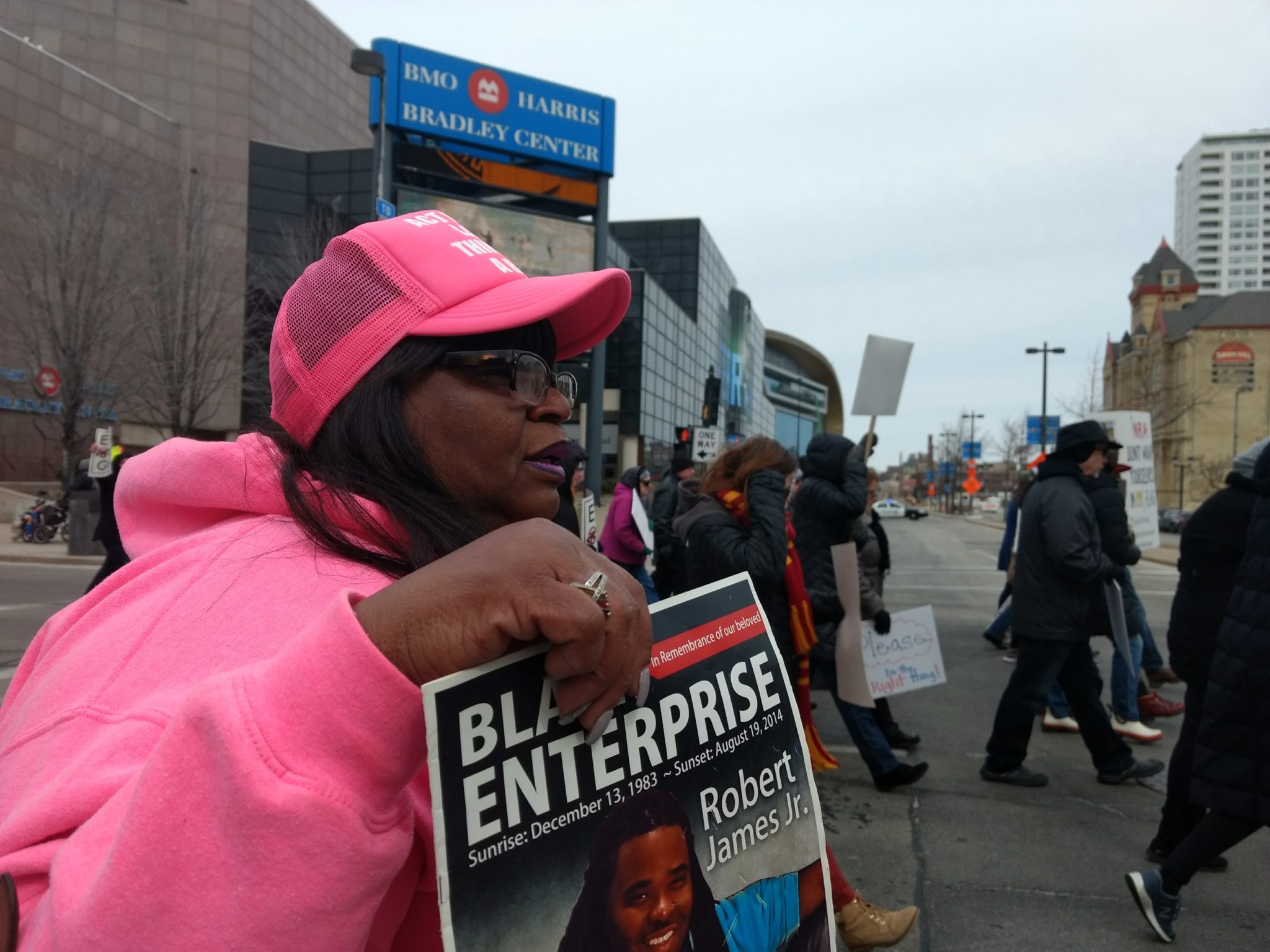
Although the majority of Milwaukee’s African-American population – nearly 40% of the city – was markedly absent, at the march in Washington, D.C., D.C. Mayor Muriel Bowser, along with Moms Demand Action DC and members of Black Lives Matter, attended the Rally for Our Lives in solidarity with the overall marches.
There, the students of the Marjory Stoneman Douglas shooting spoke up for themselves, organized mass movements and are now encouraging legislative reforms for gun laws. Despite their youth, they have been passionate and the most forceful advocates for their cause. They have also refused to trample on the Second Amendment, instead advocating against gun violence with “common-sense gun legislation” in the form of closing background check loopholes, banning bump stocks, and reconsidering the age of ownership for semi-automatic weapons.
One of the movement’s strongest assets is that it focuses on a specific, single issue. Dr. Harwood McClerking, an Africology Department professor at the University of Wisconsin-Milwaukee, said this is typical of most majority-white movements, which tend to thrive because they have a clear, single-issue focus.
“Black people have too many challenges, so they tend not to concentrate on only one of them,” he explained. “American movements, non-black movements, tend to form over single issues [but] it’s very difficult for any Black movement to be a single-issue movement.”
McClerking also suggested that race plays a large part in how audiences are react to group movements.
“Because blacks have been held as an object of derision and fear for so many years, for literally centuries, there’s a tremendous amount of negativity towards them. People who aren’t black react very negatively to black images – very negatively,” he emphasized.
Statistics show that African-Americans are disproportionately affected by gun violence in Milwaukee and Washington, D.C where the main march was held.
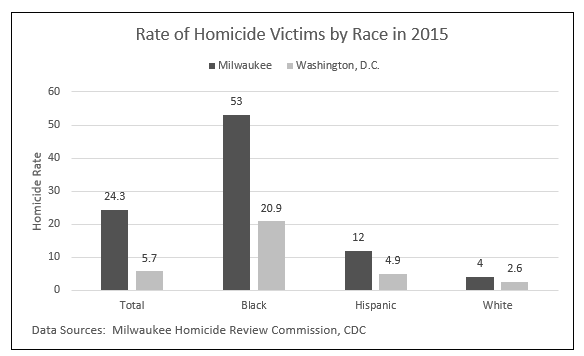
Milwaukee’s relationship to gun violence is unique to the state. According to the CDC and 2016 Milwaukee Homicide Review Commission (MHRC), the 2016 homicide rate in Milwaukee was 32.2 while the rate in Wisconsin is 4.8.
In comparison, the number of reported homicides in Broward County (81) during 2016 was less than 7 percent of homicides recorded in the state (1,294) by the CDC.
In Milwaukee, children are often included as victims of gun violence. According to the Homicide Review Commission:
- In 2016, there were approximately 10 non-fatal shooting victims under the age of 18.
- In 2015, 36 non-fatal shooting victims were 17 years-old or younger and 111 such victims were between the ages of 0-19.
- In 2014, 50 non-fatal shooting victims were 17 years-old or younger and 147 such victims were between the ages of 0-19.
- In 2016, approximately 57 homicide victims (all homicides and non-fatal shootings) were 17 years-old or younger.
- In 2015, 54 shooting victims were 17 years-old or younger.
- In 2014, 76 shooting victims were 17 years-old or younger.
Alicia Walker, who joined the Milwaukee marches, brought her 12 year-old son, George.
“I’m here for the people that died because someone with hate in their mind was able to buy a gun and just mow them down,” he said.
Enlarge
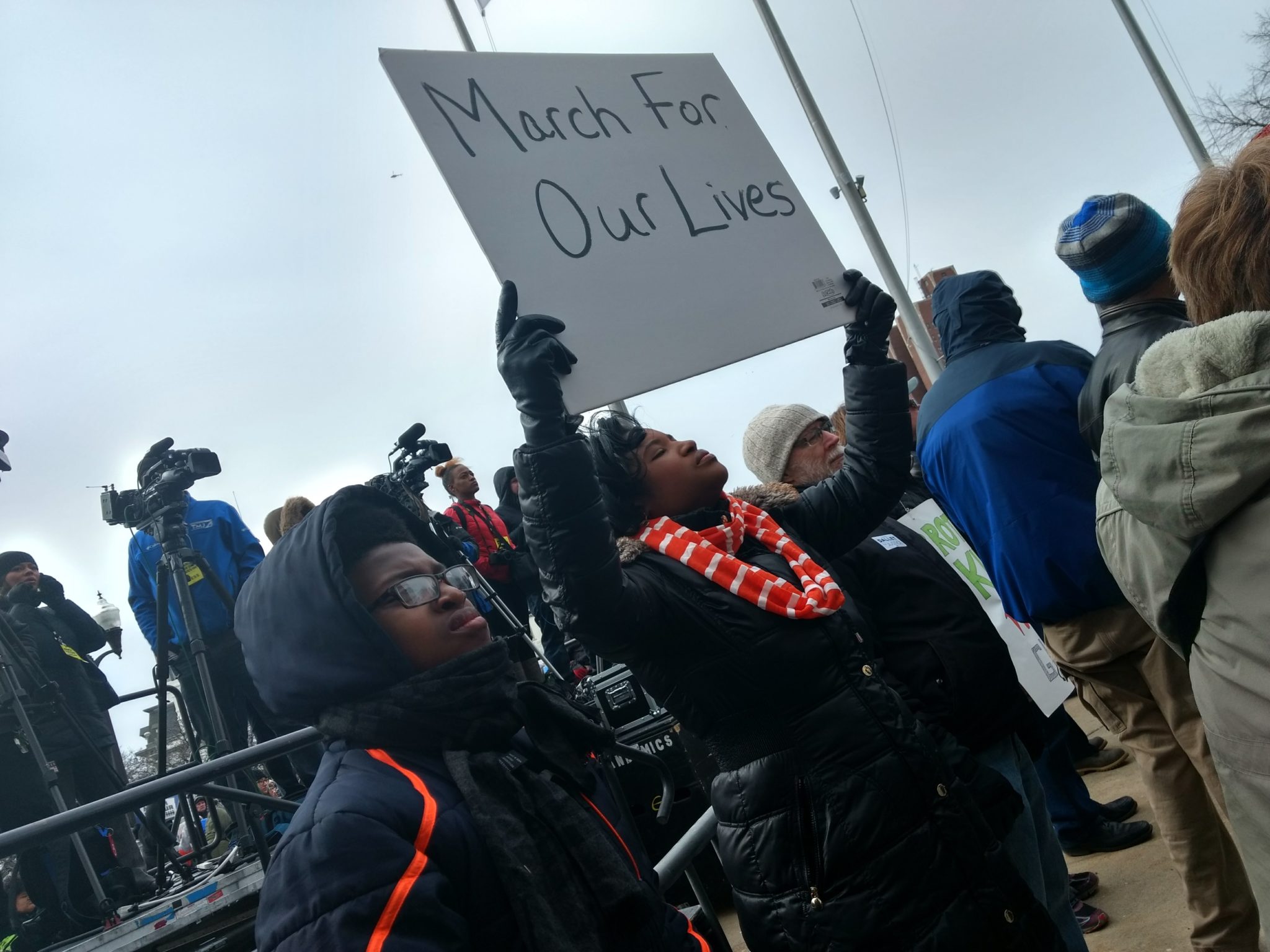
George said that he’s been participating in “code red drills” at Maryland Avenue Montessori High School since he was very young.
“I feel kind of mad because I’d rather be doing my work at that moment instead of having to hide and pretend like somebody is in our school trying to kill us,” he said.”
The aspiring architect said he hopes to be move active in the March for Our Lives movement as he gets older, while Walker said she hopes the movement will remain strong and prompt legislative action.
However, she also agreed that very few among the crowd represented the most affected demographic of homicides and gun violence in Milwaukee.
“The messaging was not such that they felt included. A little Black Lives Matter would not have hurt,” she added.
Damon Rimmer is the African-American father of two St. Francis High School students, Blanche (15) and Kareem (16). Rimmer often surprises people because he owns two weapons: a gun and a PhD. However, he said neither can prevent others’ stereotypes about black males from Milwaukee.
Kareem said there’s no valid reason to cover victims of gun violence differently.
“School shootings get more attention, I guess. For what reason? I don’t know.” He shrugged. “It’s the same thing: someone is getting killed.”
“If someone was to get killed,” Blanche agreed, “they should get treated the same way.”
Rimmer said the media perpetuates stereotypes by changing coverage, depending on the race of those involved.
“If it’s not attached to black people, there’s room to be understanding and compassionate. Case in point, a young boy killed his ex-girlfriend and shot another student [and] the media says that he was lovesick. If a black person killed a young girl and her boyfriend, it would not be [like] that.”
Kareem pointed to his father. “You see my father. He has a PhD, he is not a criminal, he is not a thug,” he said, shaking his head. “All black people are not thugs.”
In fact, many are victims.
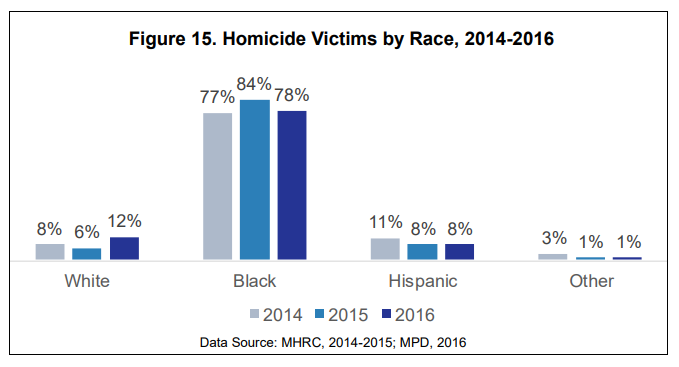
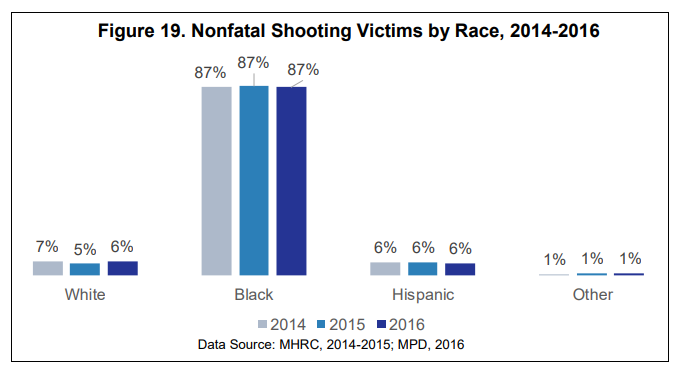
The failure to balance negative coverage with an equal frequency of positive coverage can lead viewers to develop pervasive stereotypes reaffirmed by daily news.
A textual analysis conducted by Kassia Kulzszewicz of St. Catherine University reached the following conclusions:
“[A] study examined emotional discomfort of participants after viewing a crime story which presented perpetrators of different skin tones. The results of the study showed that ‘all participants found the perpetrator more memorable when the representation was a dark-skinned Black male’ (Dixon & Maddox, 2005, p.1555) . . . Parham-Payne (2014) argues that her research supports the finding that negative stereotypes are maintained in the media and specifically towards Blacks. The stereotype portrayal incorporates that Blacks are “innately contentious and aggressive” (p.762). . . University of Michigan Professor, Richard Allen, discussed findings that African-Americans who were highly exposed to media, television, were more likely to report lower self-esteem (Luther et al., 2012) . . . While members of the community who identify as African American are generally at risk for media bias, it is thoroughly present in research that African American males receive the bulk of negative media attention. Not only is it concerning that Black males are targets for negative coverage, but it is further concerning that all Americans are liable to be impacted in ways that affect their racial perceptions.”
“What I'm thinking is, they still don't see us as people.” - Blanche Rimmer
Dr. Stephen Hargarten, the Medical College of Wisconsin’s Emergency Department chair and experienced gun violence expert, said that even though mass shootings receive most of the media attention, gun violence is a chronic problem.
“It is constantly happening on a regular basis, whether a despondent 15 year-old gets a gun or an inquisitive 6 year-old picks one up,” said Stephen Hargarten, who described the nationwide rate of gun violence as a “significant biopsychosocial burden.”
The biopsychosocial approach addresses issues on biological, psychological and social fronts, many of which can be discerned from data collected on the type of escalation which leads to gun violence.
For example, in Milwaukee, the likelihood of becoming a victim from argument or retaliation-related shootings is 20 percentage points higher for black males, ages 0-19 (54.8 percent) than it is for white males, ages 0-19 (31.4 percent).
Hargarten noted that observing data through a biopsychosocial lens allows all areas of the community to address gun violence in a concerted manner.
“[Milwaukee] was one of the first counties to link information on firearm deaths, and it resulted in our pilot program, the national violence death reporting system,” Hargarten said, adding, “I think it’s really important for us to address this in its entirety as a public health issue,” Hargarten added.
Shringalah Webb, a pre-med and psychology senior at UWM, is from the southside of Chicago where the issue of gun violence often comes with daily reminders.
Enlarge

Dr. Vincent Hutchings, a political science professor at the University of Michigan, said that it’s difficult for African-American movements against gun violence to gain traction because they are often portrayed as the perpetrators of gun violence in media.
“My suspicion is that there is more sympathy directed at white victims on average, than at black victims, probably because the audience for the mainstream media is majority white,” Hutchings said.
“African-Americans tend to be portrayed as more violent, more apt to say use welfare, maybe less intelligent – those are some of the prominent stereotypes fostered in mass media. Because of that, I would assume that in the case of protesters, it is the same thing,” he said.
In August of 2017, The Guardian reported on an FBI memo which deemed “black identity extremists” a violent threat.
The assessment, made in the bureau’s counter-terrorism unit, cited Micah Johnson, who shot and killed five police officers. Although Johnson was unaffiliated with Black Lives Matter, the vague definition has allowed them to be further targeted for federal monitoring.
“The very fact that we need a movement called black lives matter suggest that they don’t in this society,” Hutchings said. “The flip side is that white lives do matter.”
Kelly Mitchell, a student at UWM studying community engagement and education, said African-American protests are covered as dangerous in the media because African-American lives “don’t matter.”
Enlarge

Hutchings noted that media coverage plays a big role in perpetuating or changing stereotypes.
“It’s easier for a majority white audience to identify with non-white people [so] it would take them being very conscious of their biases,” he said. “They would have to take very conscious steps to try and do the opposite of what they’ve spent a lifetime being trained to do,” he said.
The media, for its part, has noticed racial disparities in the coverage of gun violence and protests in response to that violence.
ABC News, the San Francisco Chronicle, Pro Publica, BBC, Huffington Post, Vox, Time, The Guardian, and PBS have all written stories noting that although African-Americans are disproportionately affected by gun violence, mass shootings of mainly white victims remain the greatest motivators for action on gun legislation.
Because the media helps shape public perception, Hutchings said they can broaden the focus of gun violence to be more inclusive. “You have to have an active awareness to produce positive coverage and to avoid unduly negative coverage of non-white and African-American communities in particular.”
“You can tell yourself, ‘I don’t go around with a sheet on my head burning crosses on my lawn, that means I’m a good person,’” he said, “[But] It’s not enough not to be a racist; you have to be an anti-racist.”